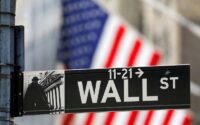US Retail Sector’s Problems Are Poised To Worsen
Authored by Simon White, Bloomberg macro strategist,
Retail stocks face becoming the poorest-performing sector as the cumulative impact from higher rates causes consumption to weaken further.
Tuesday was a reminder that markets remain vulnerable to geopolitical risks. Still, the inflation backdrop remains the market’s primary driver, and the interplay between real growth and rates will continue to be paramount.
The S&P is down almost 17% on the year, but this masks some big underlying sectoral differences. Energy and Oil and Gas are up on the year, yet almost every other sector is down. The worst-affected are some of the most interest-rate sensitive — tech, real-estate and homebuilders, and retail.

We get October retail sales data today, with expectations for a robust 1% m/m rise after a flat move last month. But retail sales and consumption face two strong headwinds.
First, credit is tightening as rates rise. Consumption is heavily reliant on credit, and banks’ willingness to make consumer loans is falling. As the chart below shows, this tends to lead to weaker retail sales.

Credit card debt has risen to new all-time highs in the US. But anecdotally, this is being used to fund the purchase of essentials as the cost of living rises, and thus does not represent a broad-based bulwark to consumer spending.
Second, housing costs are rocketing higher. Mortgage rates are at a 20-year high, weighing on affordability. As affordability falls, more disposable income will be channeled into mortgage repayments and less into consumption. The chart below shows this will be a significant headwind for retail sales over the next year at least.

Both Walmart and Home Depot announced earnings this week (Target is later today) that exceeded expectations. But the headwinds from higher rates are formidable. They operate with a lag, meaning their cumulative impact should have an increasingly negative impact on the economy.
Further, retailers still face a huge surplus in inventory after the pandemic that has led to the highest inventory-to-sales ratios in 15 years. Walmart noted its inventory position has significantly improved, but there are other retailers who will be faced with taking losses to clear up excess stock.
Retail is already one of the worst performing sectors this year, but it looks especially exposed to the twin blows of higher inflation and higher rates.
[ad_2]
Source link


